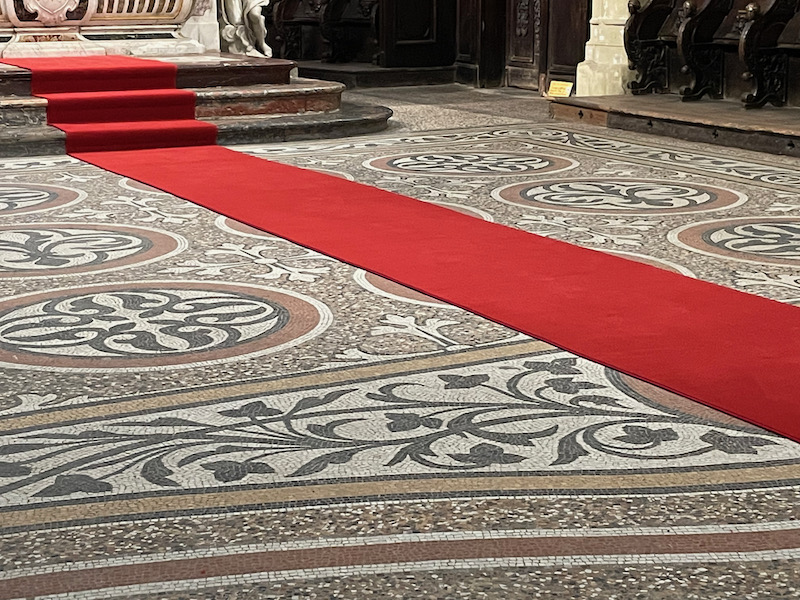Our Blog - Castelsarrasin, France
The first certain evidence of the town dates from 961. The name, Castel Sarracenum, would indicate that the castle was built in the Saracen era. The early history of the city is marked by wars; against the English until the end of the 12th century, then the Albigensian Crusade during the first part of the 13th century, and then the Shepherd's Crusade of 1320 that resulted in the deaths of many Jews in the city. The region was much affected by the Hundred Years' War, and again, during the wars of religion of the 16th century, the city's largely Catholic population was in frequent conflict with the generally Protestant surrounding region. The region is calmer during the following centuries, up to the time of the French Revolution. A bit of trivia: Castelsarrasin was the finish of Stage 17 in the 2007 Tour de France.
Our first stop was the Église Saint-Jean. It was first mentioned in 1216 and was founded by the Knights of Saint John of Jerusalem, who were living in the surrounding countryside starting in the 12th century. This specific building was built in the 16th century, between 1512 and 1560. It is built of red brick without much decoration on the exterior. Above the round window is a double-stone shield. You can see the date "1560" (which is assumed to be the building was finished) and the inscription "FPD TREBONS", which means "Fecit Petrus Trebons" or "Petrus Trebons did it". Pierre de Beaulac Trebons, who was the Grand Prior of the Order in Toulouse from 1555 to 1559, is most likely the person who funded the building of the church.
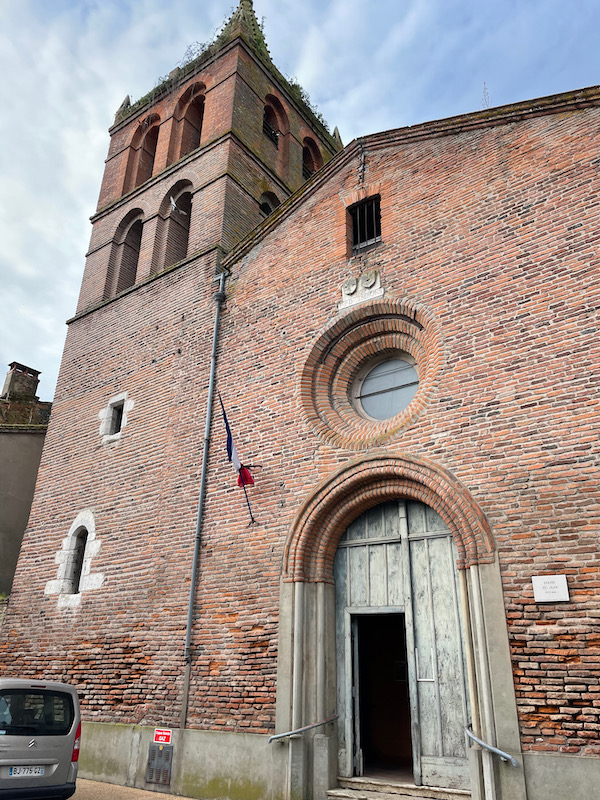
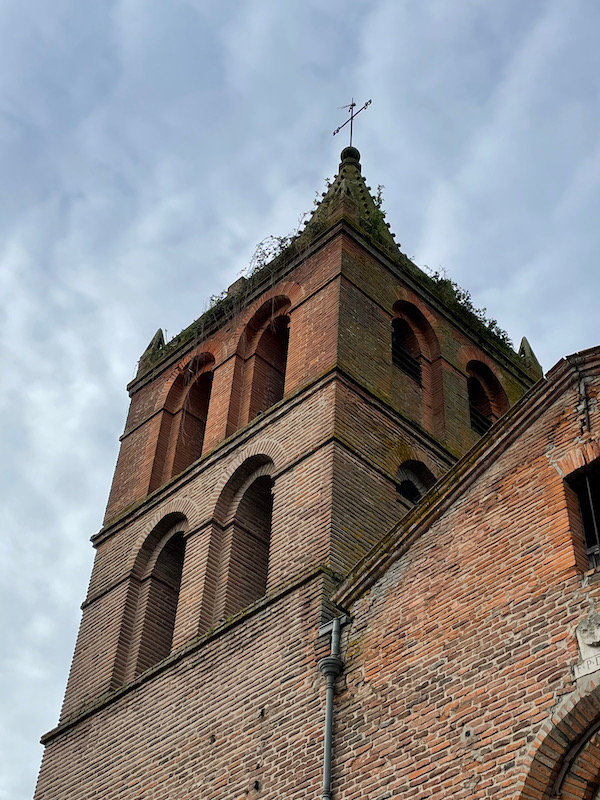
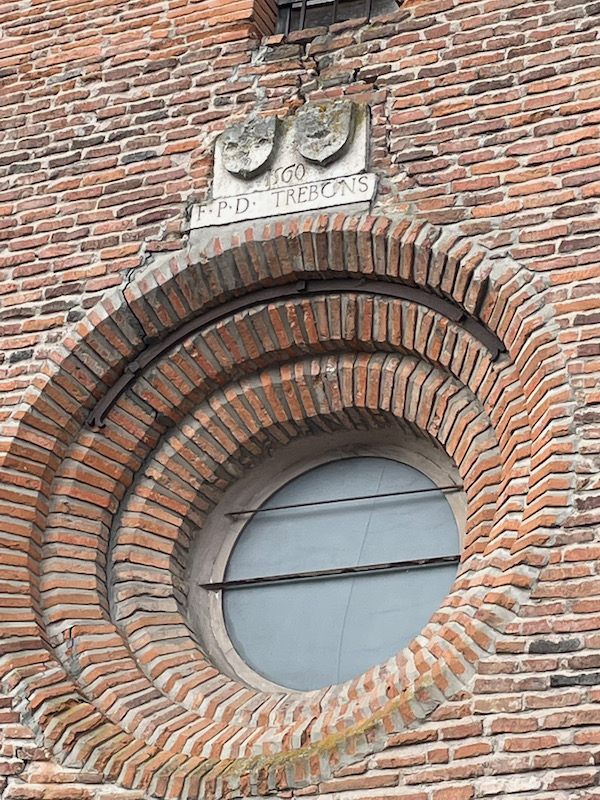
The interior has very low vaults, but you can definitely see the Gothic influences in the ribbed vaults and pointed arches. There is an aisle on either side of the main nave, but not really side chapels.

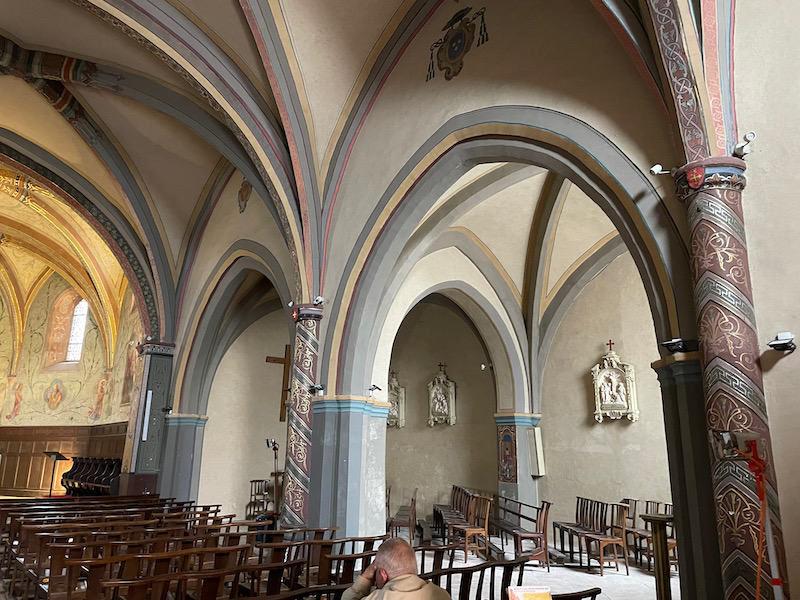
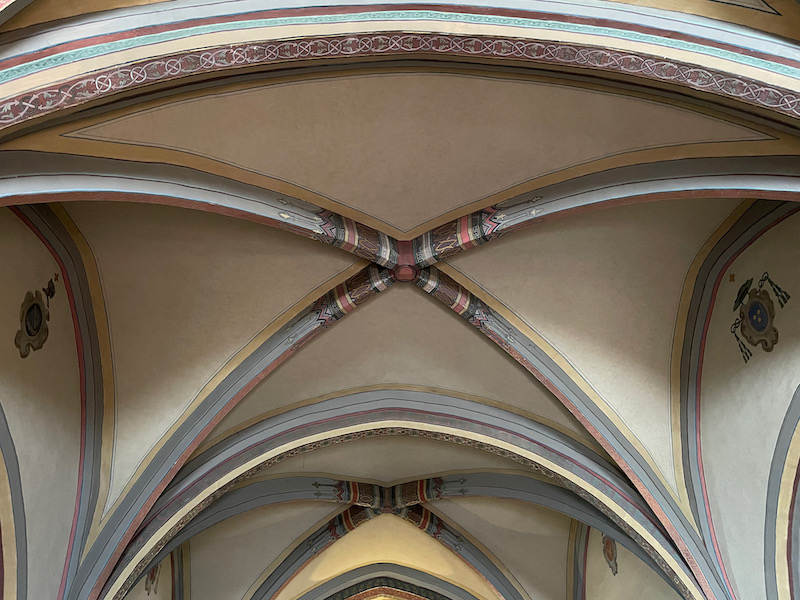
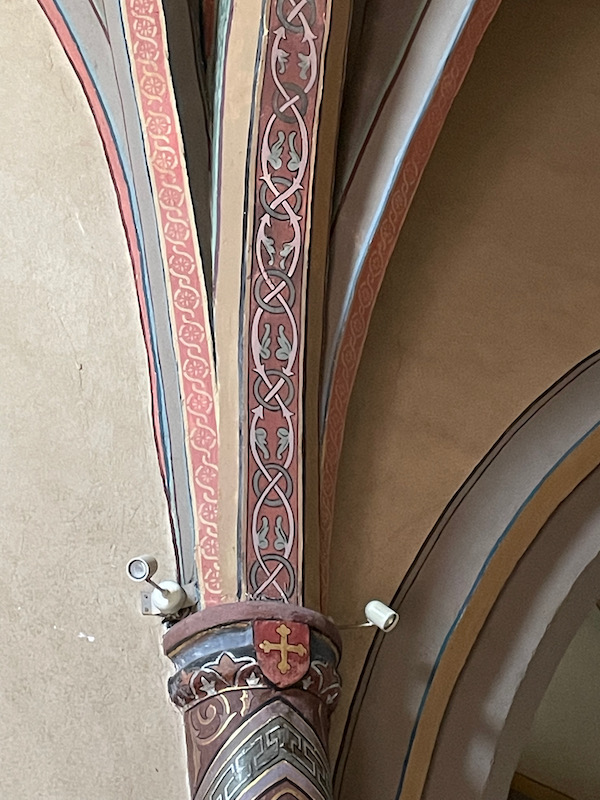
The walls and the vault of the choir are dedicated to recounting the life of Saint John the Baptist, who is the patron saint of the church (Jean is the French spelling for John). They are covered with scenes of arabesques with floral motifs where the initials of the Saint (SJB) intertwine in golden letters. The high altar dates from 1875 and is made of white marble, decorated on the front with 5 sculptures representing Jesus and 4 apostles. Each apostle is shown with their respective symbol: Mark with a lion, Matthew with an angel, John with an eagle, and Luke with a bull.
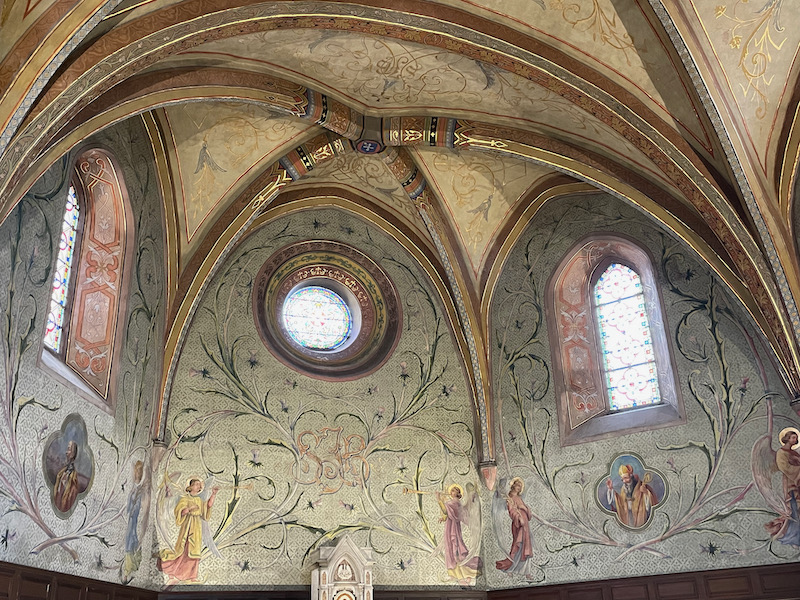
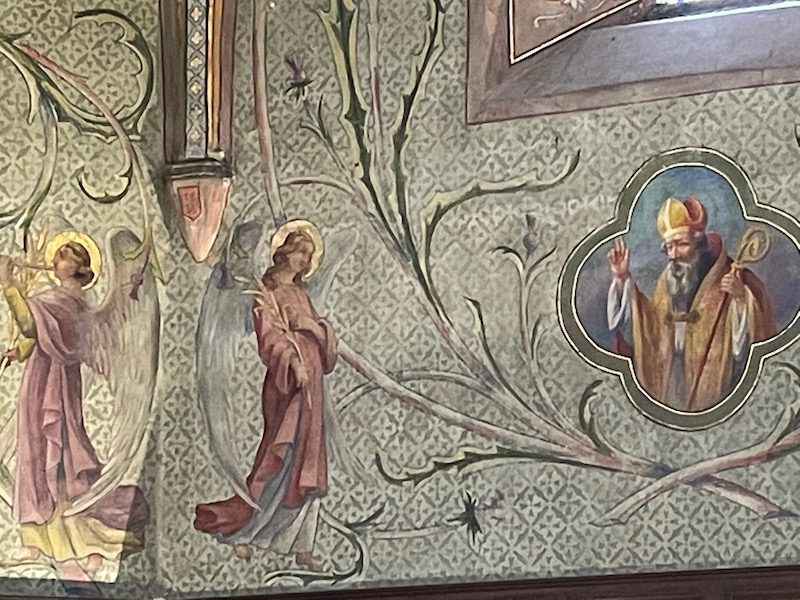
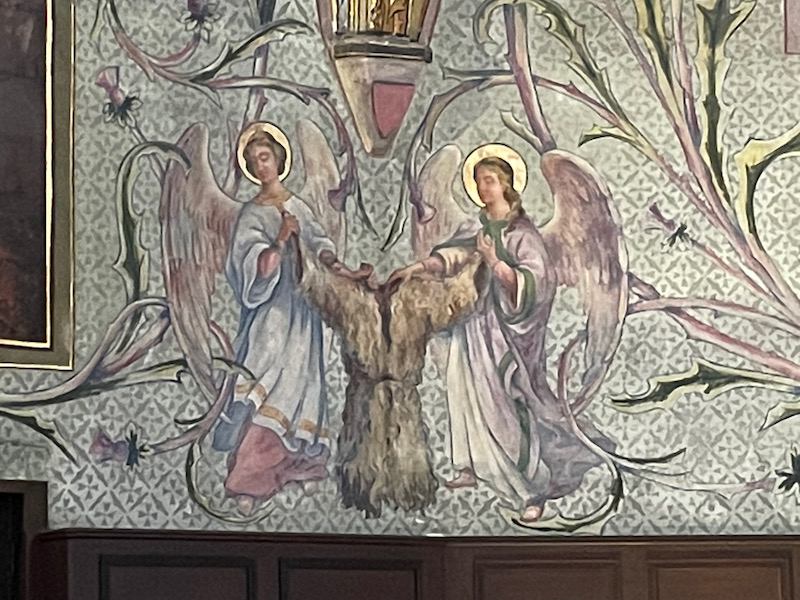

This painting shows the baptism of Jesus by John the Baptist in the River Jordan.
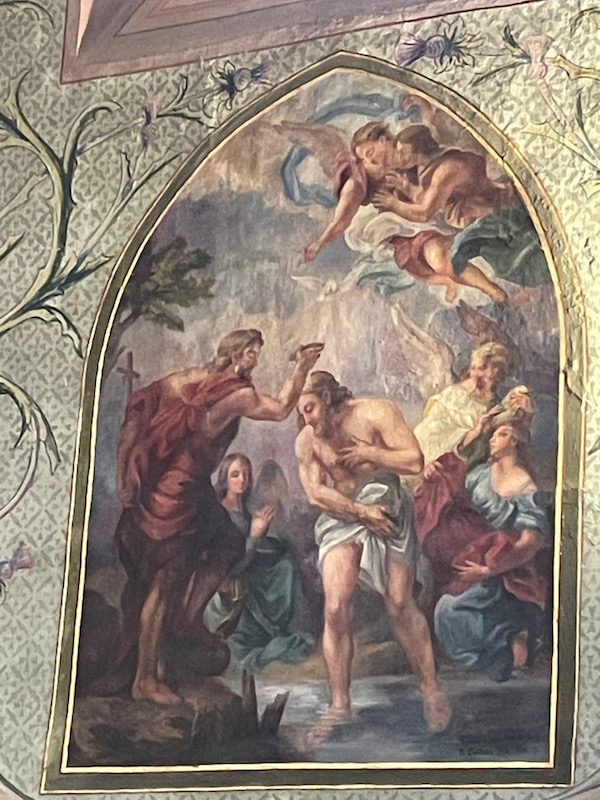
The Hôtel de Ville, or town hall, was built in 1827. At the top there is a clock made in Paris in 1847, which is framed by two statues: Mercury, Roman god of commerce, and Ceres, goddess agriculture.
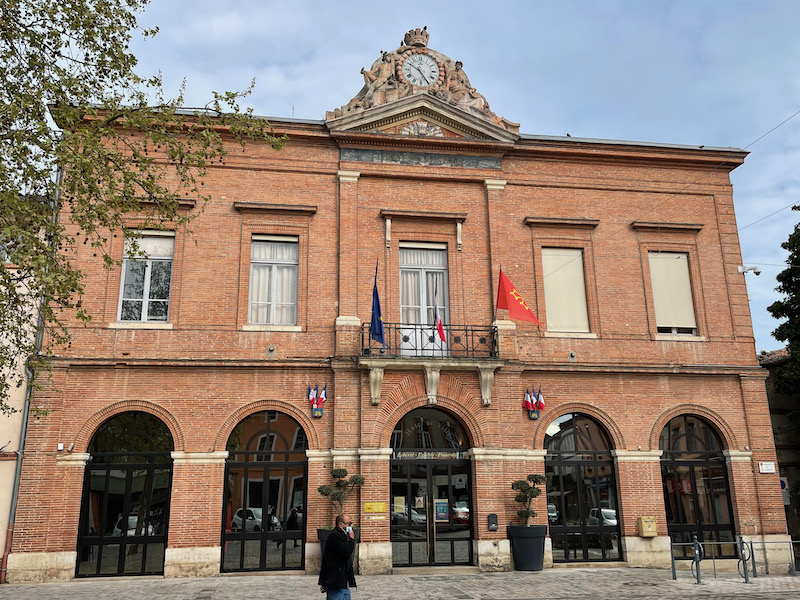
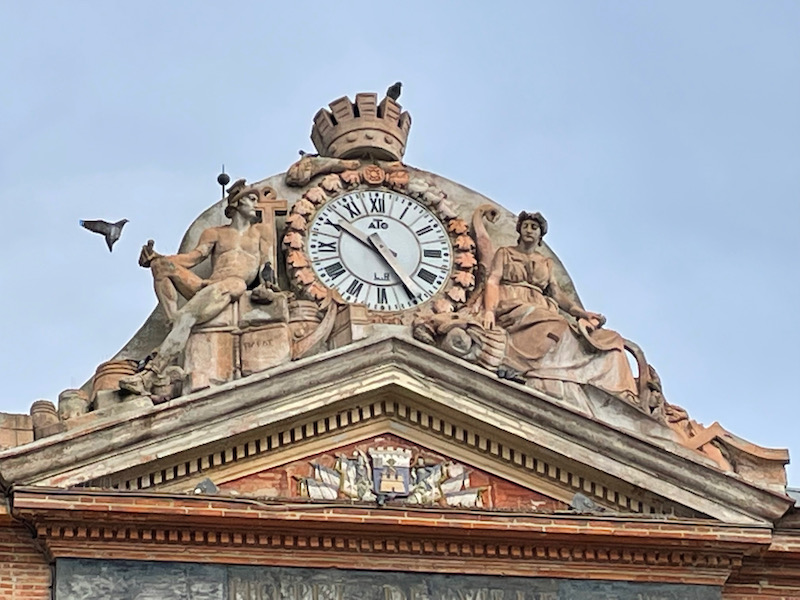
Just around the corner from the Hôtel de Ville is the Beaufort mansion, which was built in the 18th century. Most of the interesting parts were destroyed during the Revolution but on the side wall, there is a sundial that indicate both the hours and half-hours. It bears a motto in Latin which says "time flies, courage remains".
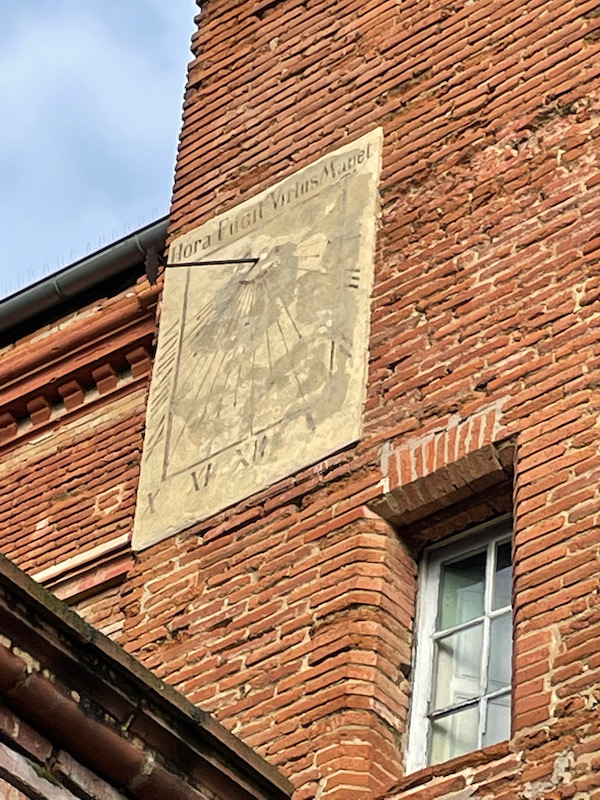
This next sight is not very old ... the Jacques-Yves-Cousteau port was created in 1997 and it has become one of the main ports of the Garonne canal. There is a fountain with a sculpture representing a steel ship, the famous La Calypso of Jacques Cousteau. It is the work of Dutch artist Ruudt Wackers, who has lived and worked in France since the 1990's. Flying above are 3 seagulls followed by 2 dolphins that have leapt out of the water.
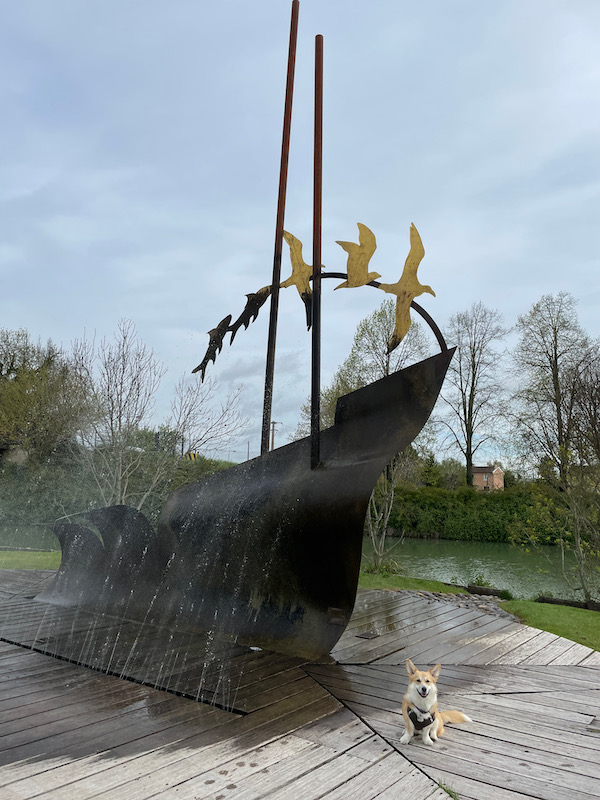
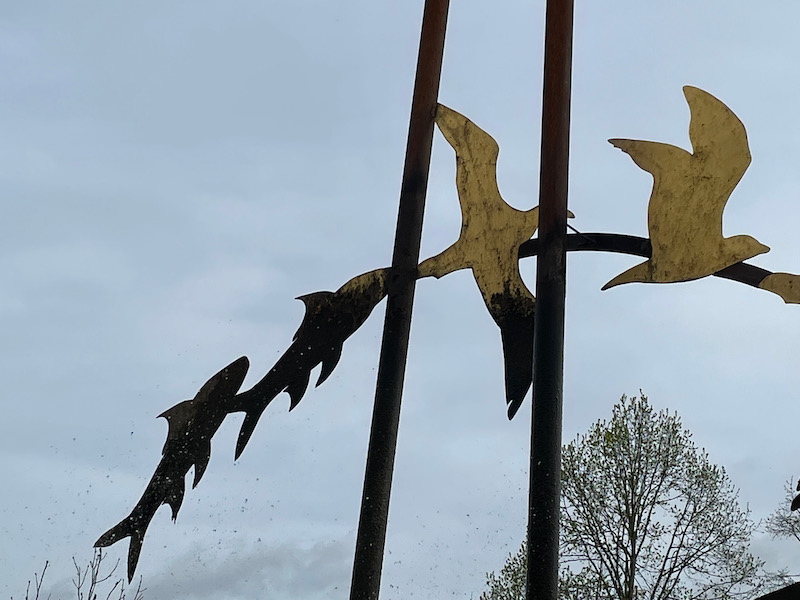
Around France, there are towns that are named "Villes et Villages Fleuris", which are "Towns in Bloom". I normally think of it as towns with lots of flowers, but in fact, the association comes under a 1901 law which is a quality of life" label. It is rewarded to communities that are committed to the living environment, and takes into account public spaces, biodiversity, and, of course, flowers!
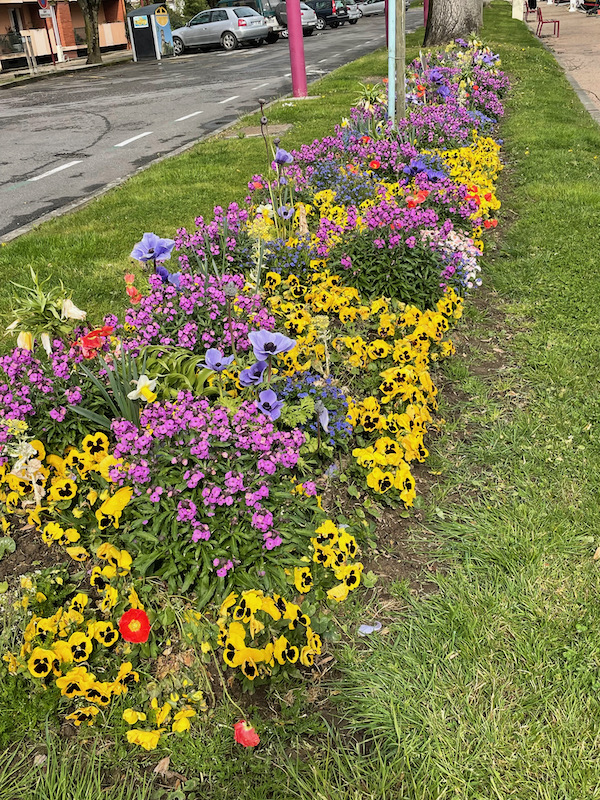
In 1912, Pierre Adrien Marceillac (at age 50) fulfilled a dream when he built a modern hotel in the Art Nouveau style, the Hotel Marceillac. He had learned about Art Nouveau when he worked in Vienna in the 1870's and built the hotel in that style but also offered travellers all the conveniences available at that time. From the information, it looks like it has stayed in the Marceillac family for 5 generations! Art Nouveau is inspired by nature and normally is decorated with plant and animal forms, like what you see here on the front.
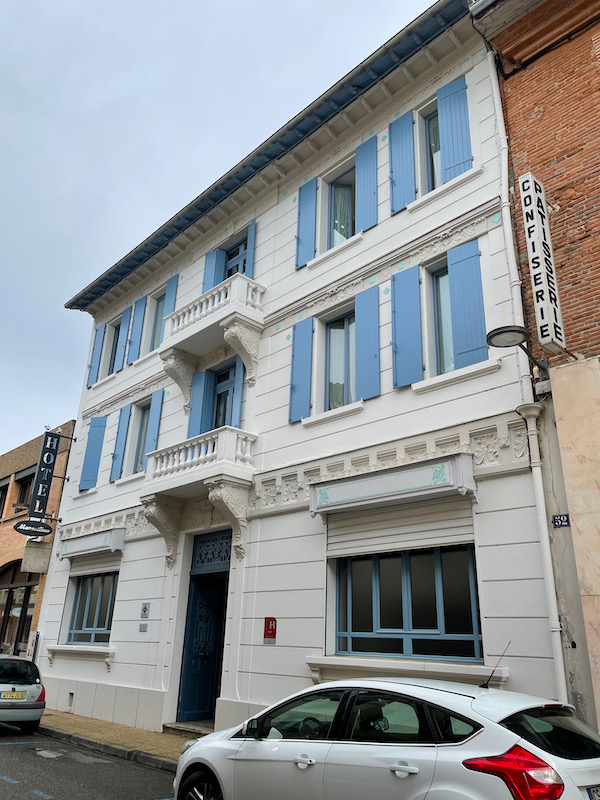
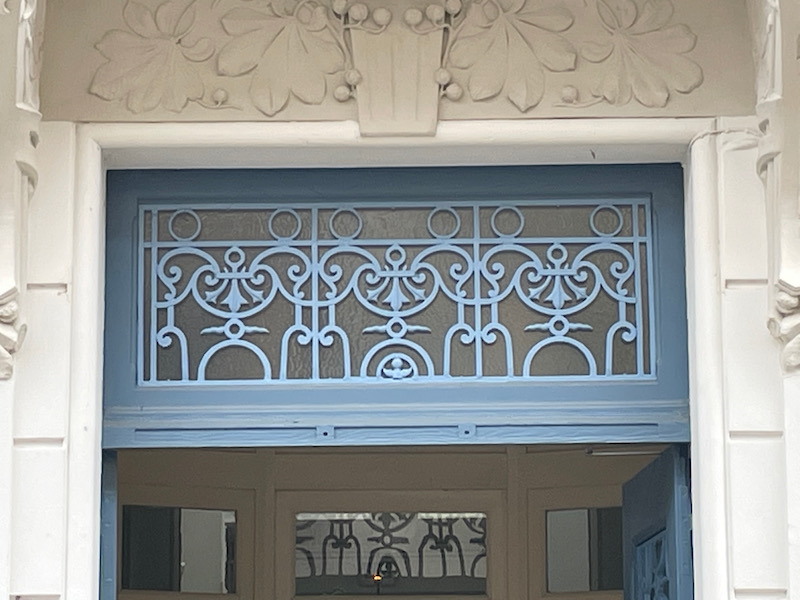
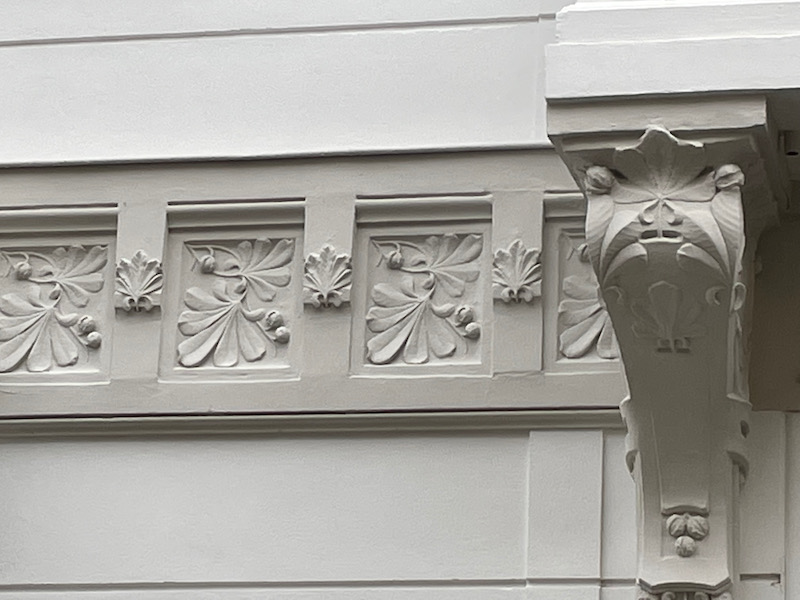
We took a peek inside to see the central atrium under a glass roof and the grand staircase.
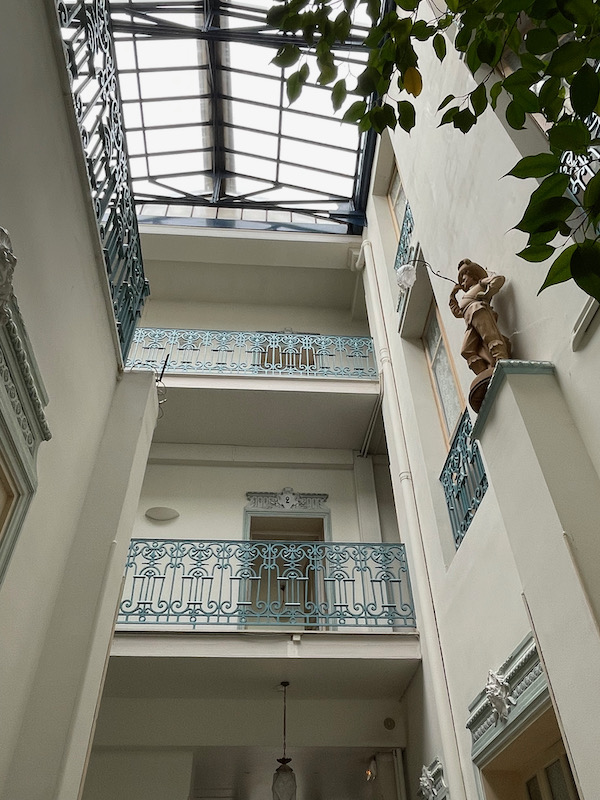
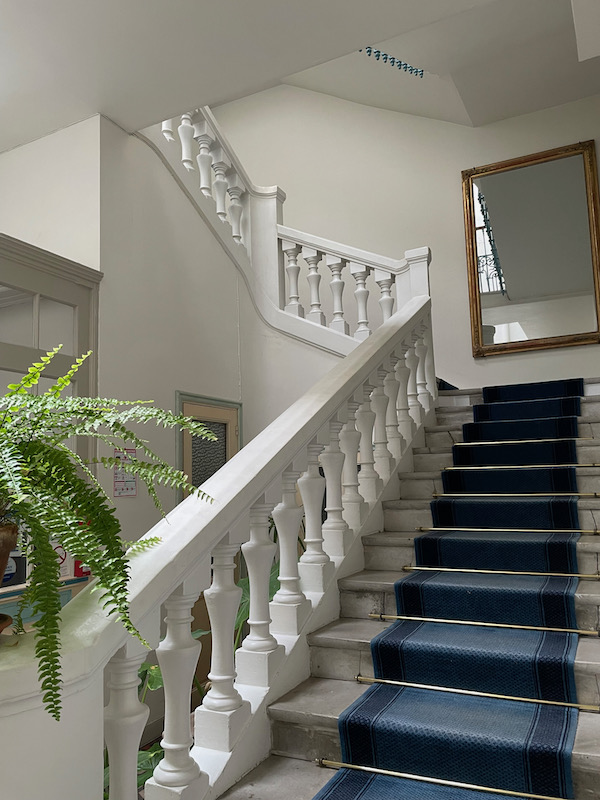
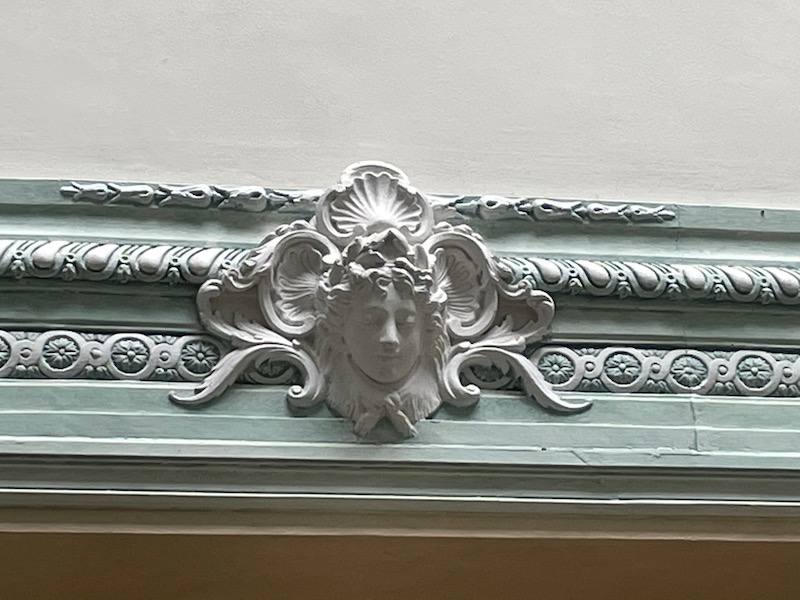
Not in the best of shape, but this is the façade of the "Maison Renaissance", from the 15th century.
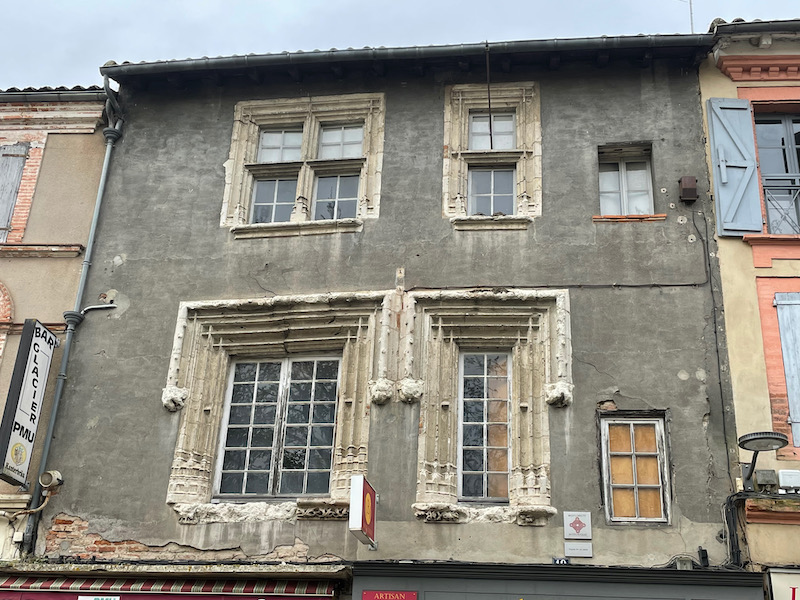
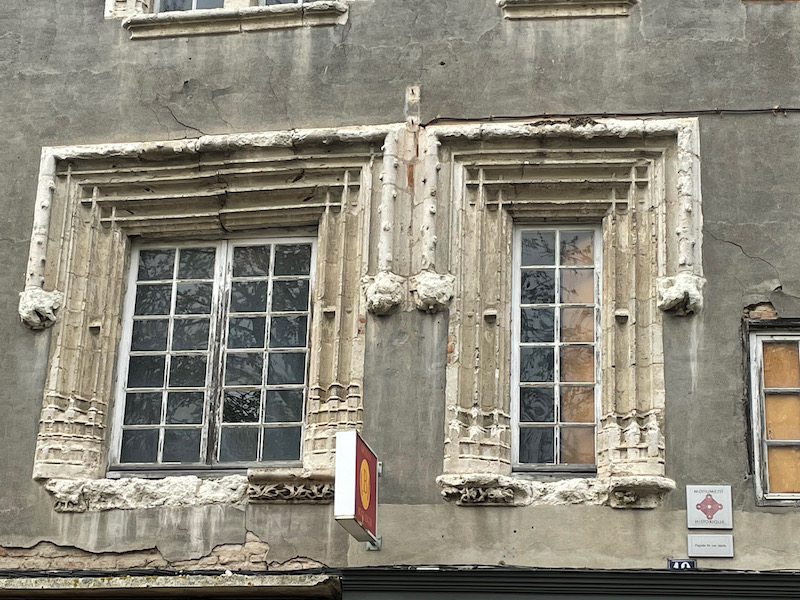
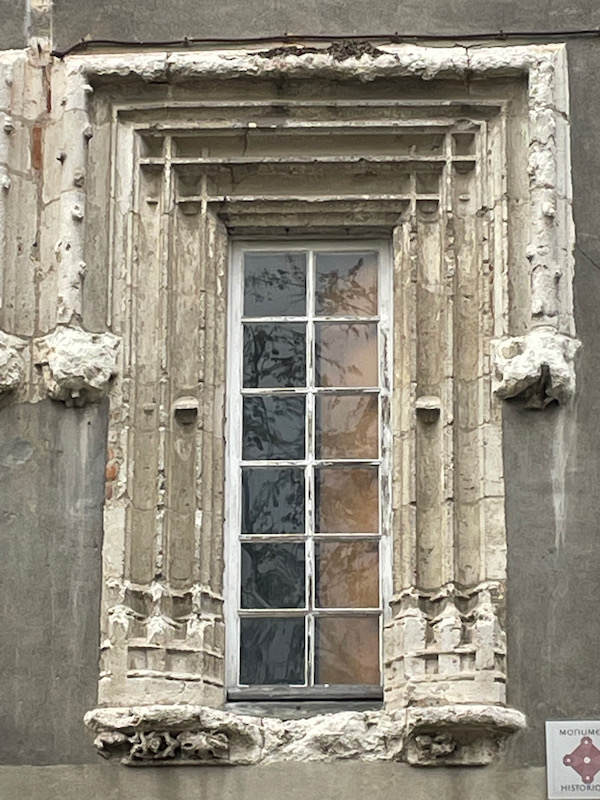
Revolution Street is the ancient Toulouse-Bordeaux Roman road and is the oldest road in the city. The bourgeois and notables built beautiful brick residences there, with outbuildings (stables, barns) and courtyards that overlooked medieval alleys. We took a peek at a couple of them ... some better than others :-). The first 2 pictures is a house built in the 16th century with a half-timbered Renaissance facade, mullioned windows, and Gothic-Renaissance motifs. I'm not a big fan of painting the mullioned windows brown (instead of the natural white limestone). For the 3rd picture, we went down one of these medieval alleyways to be able to see a couple early 17th-century mullioned windows.
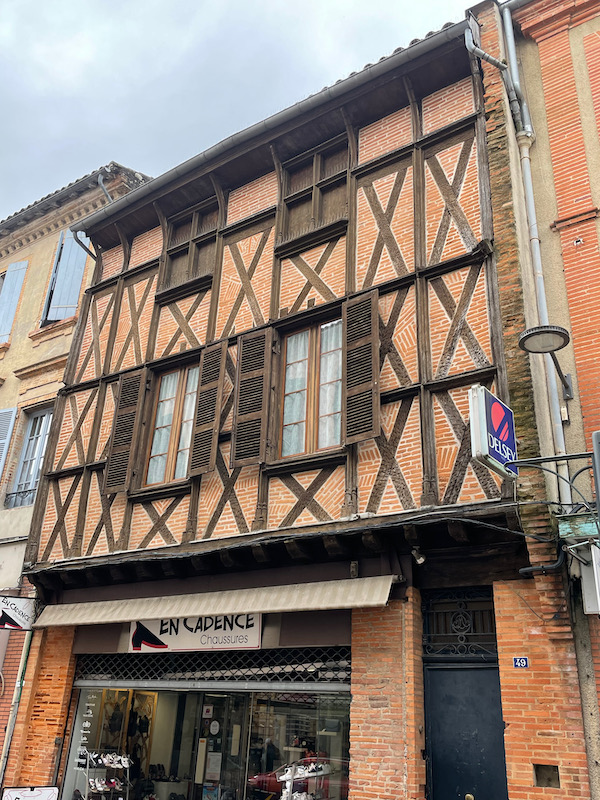

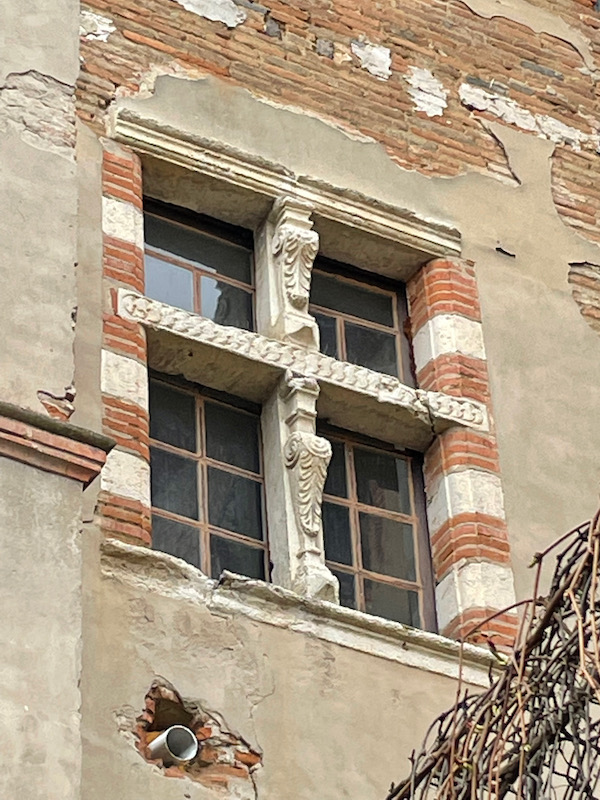
The Maison d'Espagne takes its name from one of its many owners, Jean-François Ignace of Spain. He was Mayor of Castelsarrasin in 1739 when he acquired this property. He added the square corner turret stopped by a four-sided dome, crowned with a lantern. Above the portal was a stone shield bearing the coat of arms of the Spanish family. In 1956, the tower was demolished due to being in bad condition and rebuilt in the 2000s. The name that can be confusing…especially since, for decades, this residence was also called “Italian House” because of the style of its architecture.
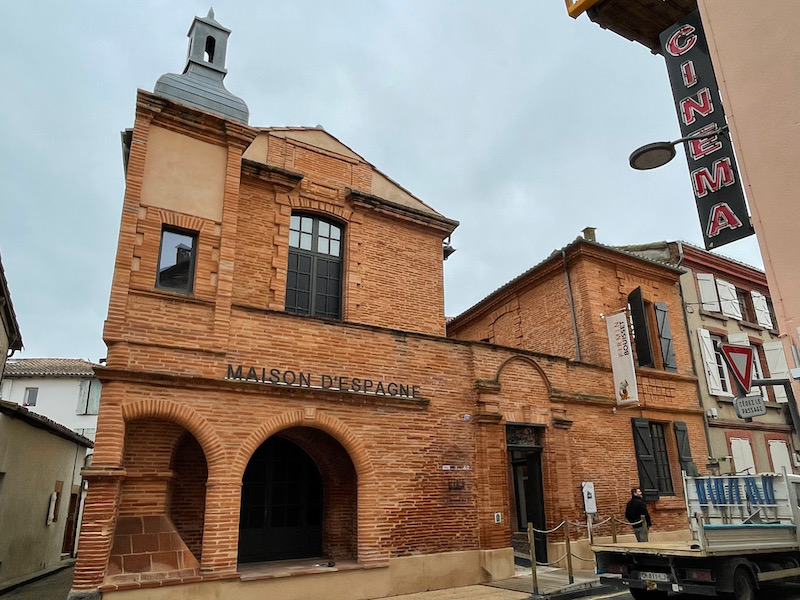
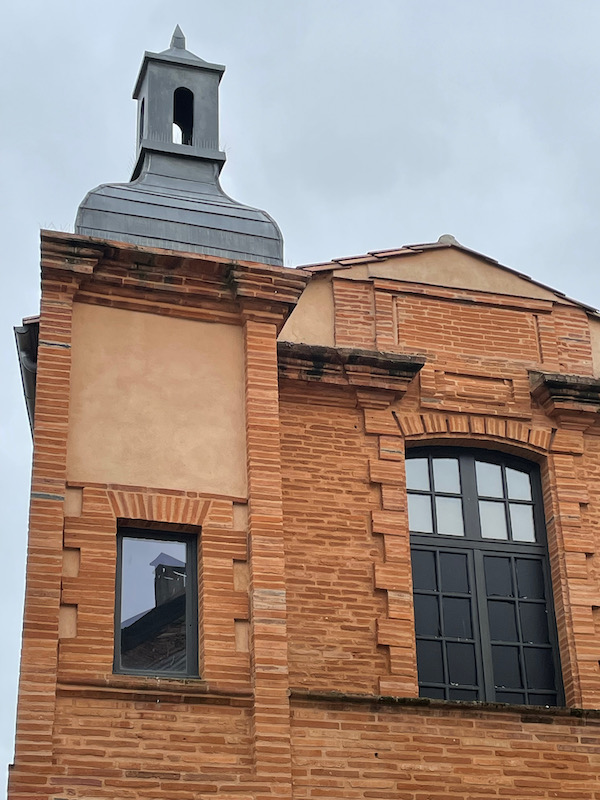
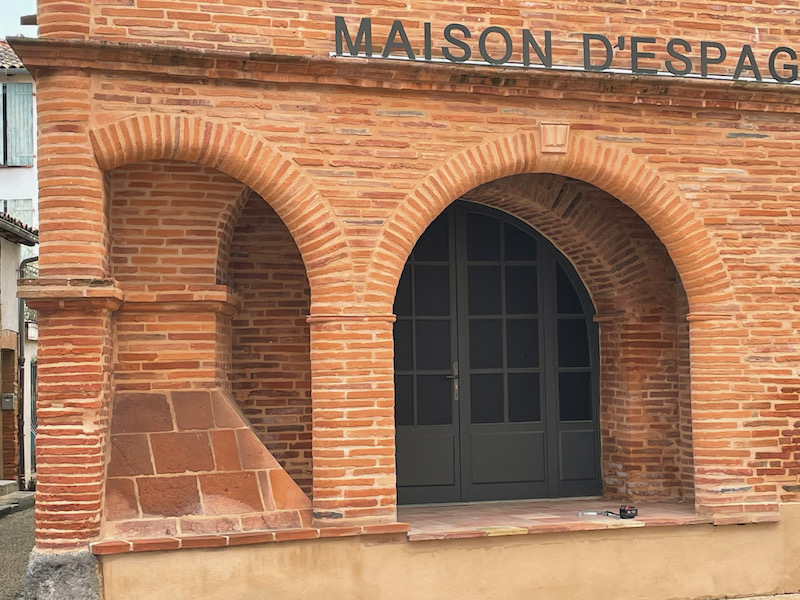
Our last stop was the Church of Saint-Sauveur. The church dates back to 961 but this church was built around 1245. Two chapels were probably added in the 14th century and the north portal was added in the 15th century.
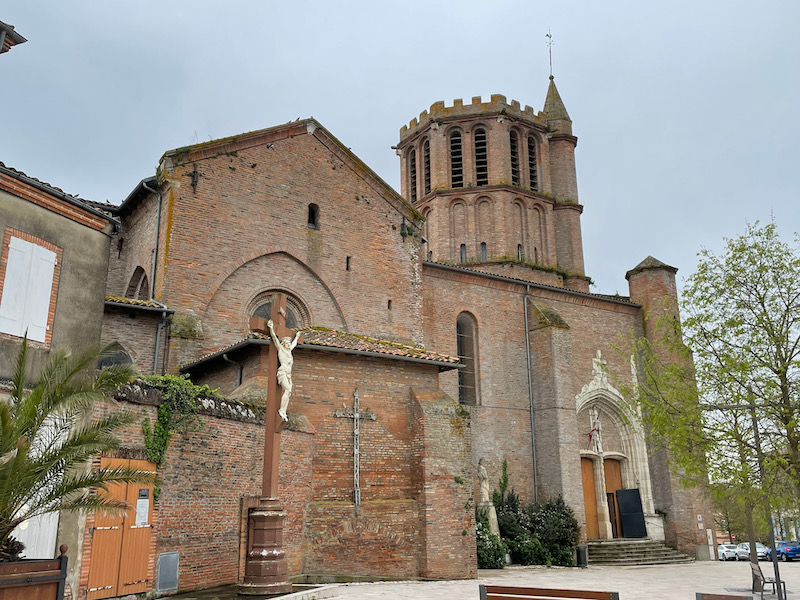
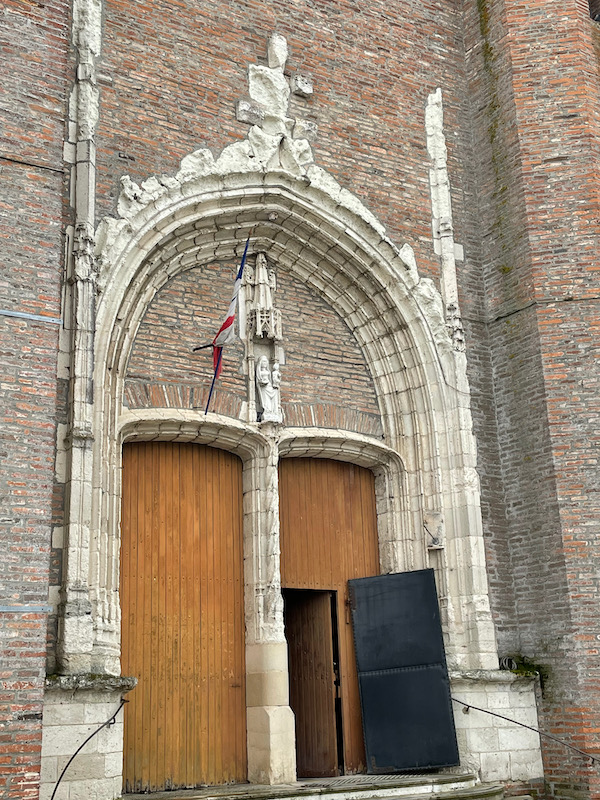
The church is an example of early Gothic architecture, with low vaults and side aisles.
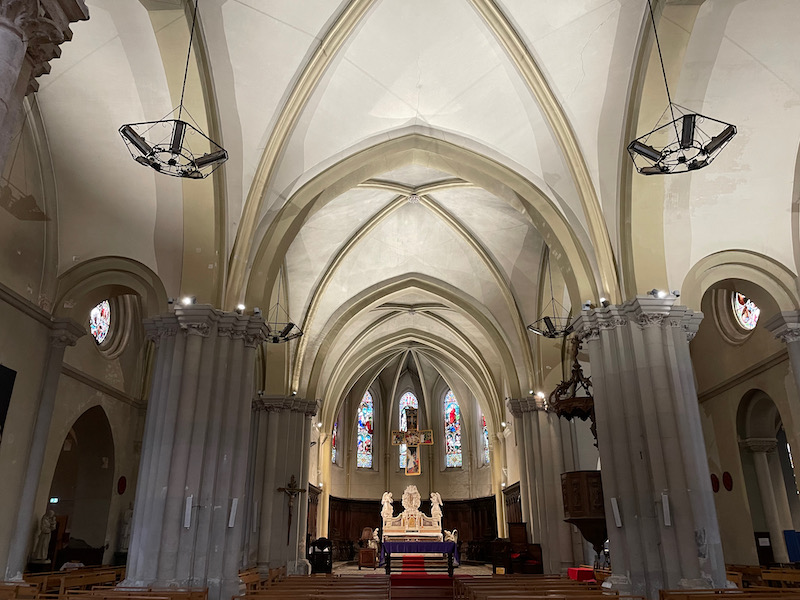
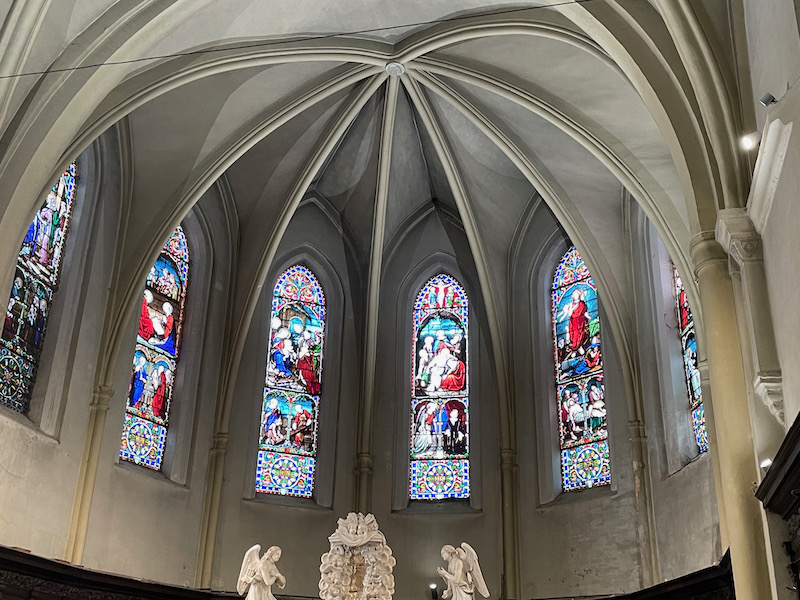
The 18th-century pavilion is made from gilded and carved wood and is used to transport the reliquary containing the relics of the Saint during the annual processions that happen in April.
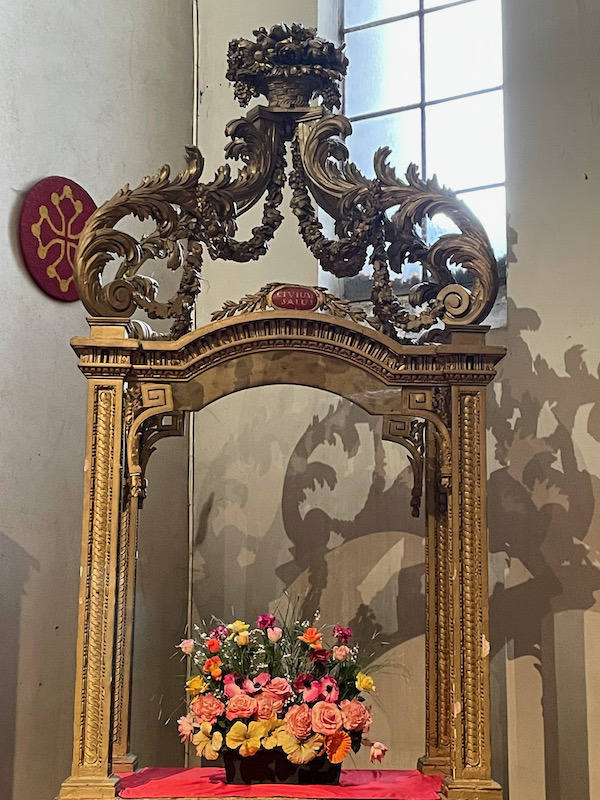
A few of the stained-glass windows, which were done between 1860 and 1883.
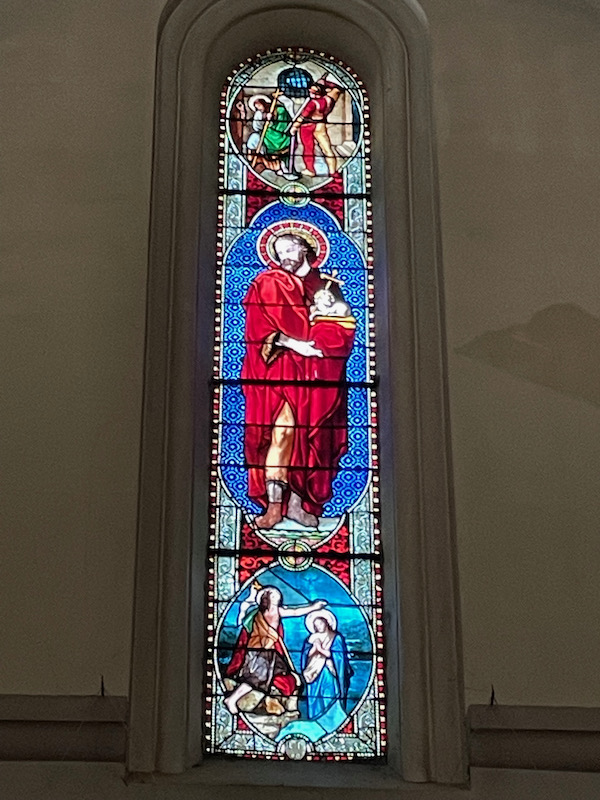
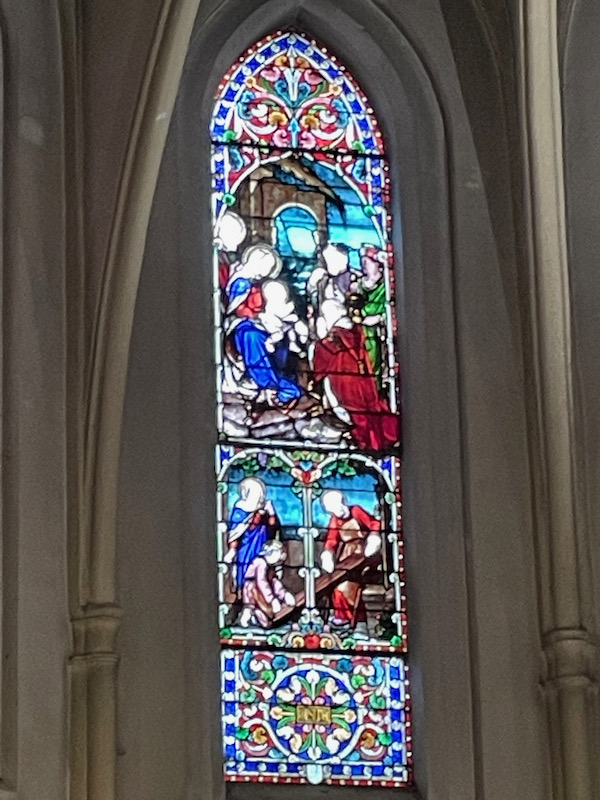
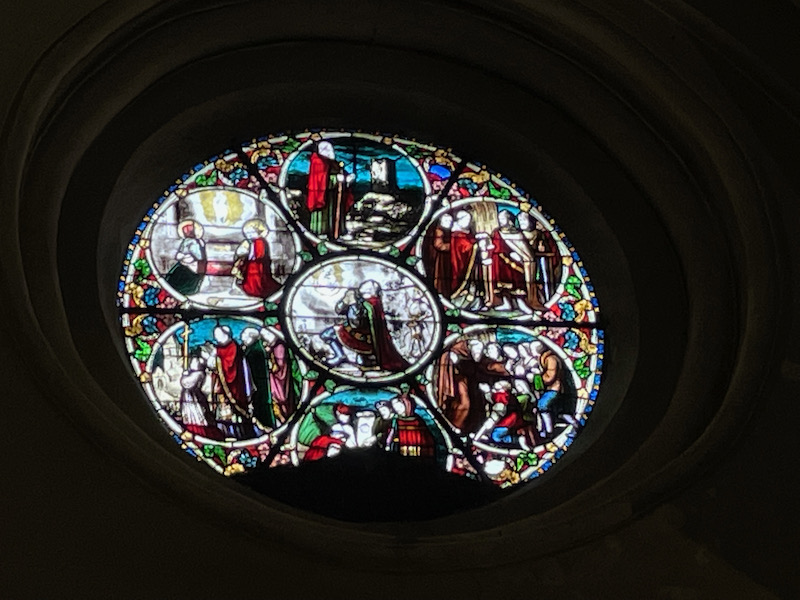
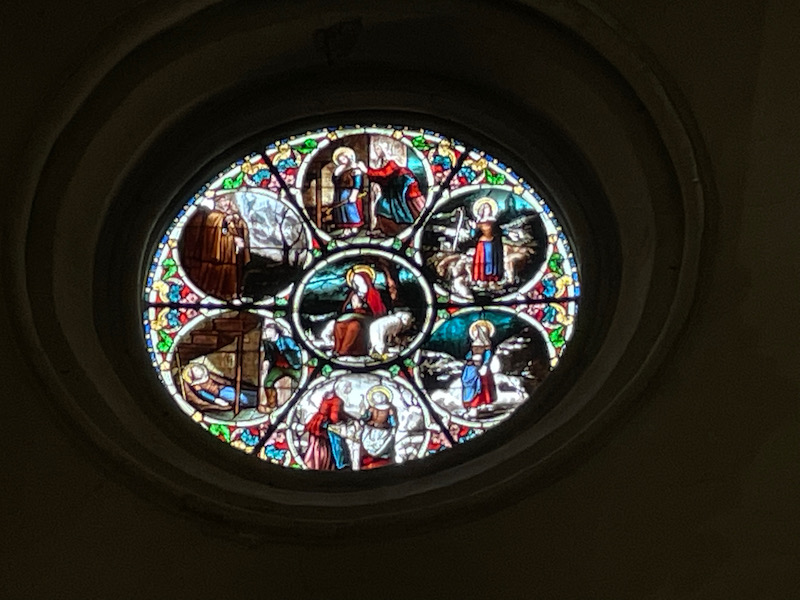
The choir stalls have an interesting story. The baroque furniture from the Abbey of Belleperche was sold as national property in 1791 during the French Revolution. Parishioners were able to buy 27 of the 80 stalls and then an additional 12 stalls were donated to the church by other purchasers, making up a total of 39 that are now in this church, to make up the 39 in the church.
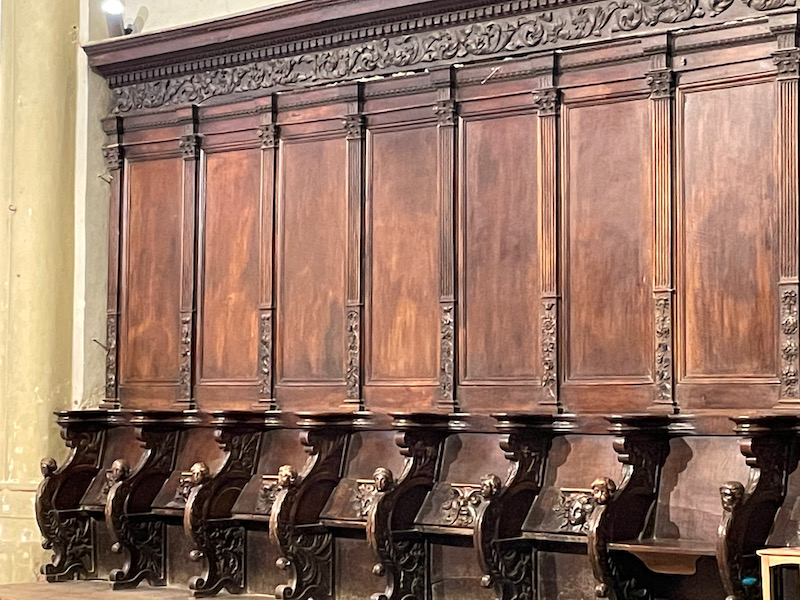
The organ case is from the 17th-century came to this church in 1799, also from the nearby Abbey of Belleperche. The carved Baroque case holds the organ, which was built in 1864.
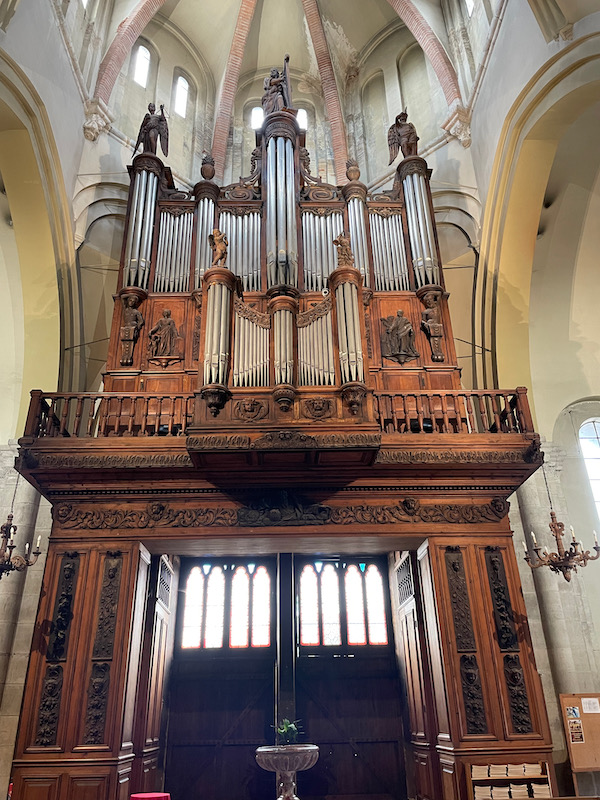

These are 2 tapestries that were hanging in the main part of the church, but unfortunately, I wasn't able to find any information on them.

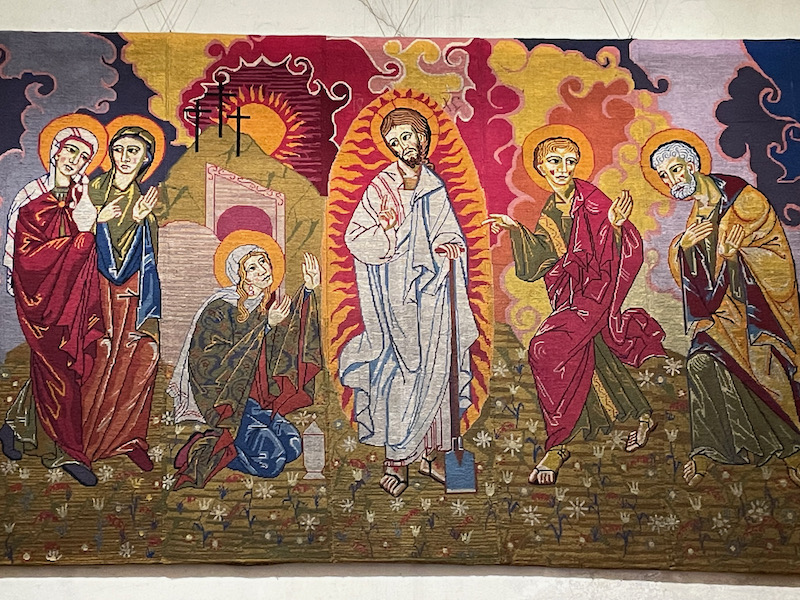
The high altar was acquired in 1797 from one of the churches in Toulouse. It is mostly white marble with inserts of other colored marble. The central cartouche has the letters A and M (for Ave Maria) intertwined. At the top are beautiful heads of cherubim and then crowned with two angels worshipers. Two other adoring angels flank the altar, carved in a pure white marble representing Faith and Prayer.
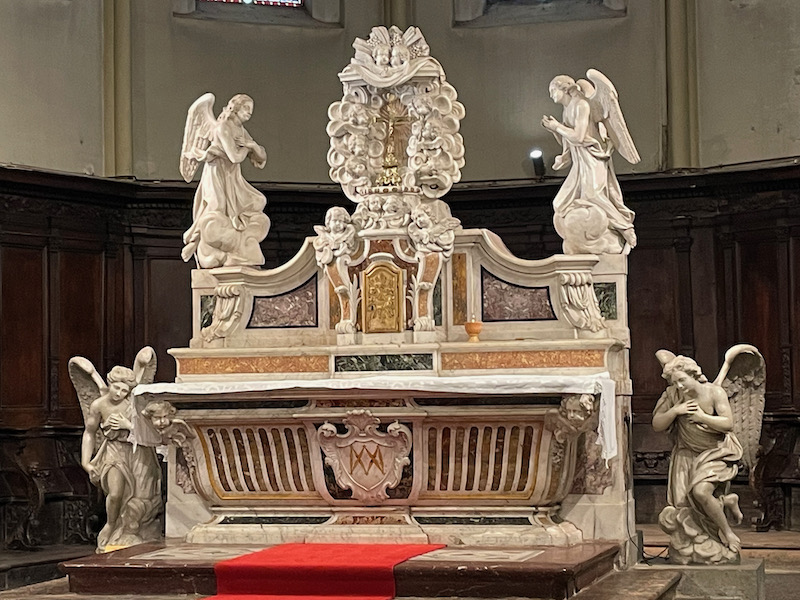
The mosaic floor of the choir was done by an Italian artist in 1876.
